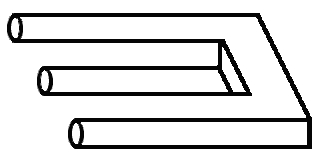Zeno of Elea was a pre-Socratic Greek philosopher of southern Italy and a member of the Eleatic School founded by Parmenides. Aristotle called him the inventor of the dialectic, and
Bertrand Russell credited him with having laid the foundations of modern logic. He is best known for his paradoxes.
In this post I want to focus on one of his paradoxes. The paradox arises from the following situation:
A Greek athlete named Achilles is approached by a turtle. The turtle wants to compete against him in a 100 meter run.
Since Achiles is the fastest runner, he decides to let the turtle start 20 meters ahead. The turtle speed is 1 m/s while Achiles can run at 10 m/s.
Now who do you think is going to win in the race? It seems that the logical answer is that Achiles will of course win. But is it indeed so?
Two seconds after the beginning of the race Achiles run 20 meters, bur he still needs to run 2 meters to reach the turtle. 1/5 of a second later, he runs 22 meters but the turtle is still ahead of him - by 1/5 of a meter. We can continue this way to infinity - Achiles will always need to pass some extra distance until he reaches the turtle.
It is clear that Achiles will never reach the turtle. No matter how much time will pass the turtle will always be slightly ahead of him. Moreover since there is no final step in this series, Achiles need to run for infinite time. This is not what happens in the real world, but what is the explanations to this?
One proposed solution is that as the distance between Achiles and the turtle approaches zero so it the time needed to pass this distance, and the sum of these time intervals is finite. Lets write it mathematically:
The intervals are:
2, 0.2, 0.02, 0.002 ......
This is a simple geometric series, and the sum is:
This is approximately 2.3 seconds. And this is of course a finite time.
However this is only a partial solution of the paradox. The reason why Zeno published this paradoxes was to defend the claims of his teacher who claimed that space, time and motion don't exist. In this paradox he tried to show that if we assume that space and time exist, what we get is that Achiles cannot outrun the turtle. And since this is not what happens in the word around us time and space don't exist - they are merely illusions.
This line of thought is probably exactly the opposite of the goal of this blog - as I see it, the goal of Math Pages is to show that math and the world around us are logical. Zeno however tries to claim that what we see is an illusion. Lets therefore take a look on another version of this paradox, a version that clearly shows the connection between this paradox and the claim that there is no time.
In this version, Achiles runs after the turtle and counts the instances in which he reached the previous position of the turtle. Thus when he reaches 20 m this is one, when he reaches 22 meters this is 2 and so on. Lets suppose he outruns the turtle. To what number he counted?
As in the previous version, there are infinitely many such points so it turns out that he had to count to infinity. But this is impossible.
As far as I know there is no mathematical answer to this problem. It doesn't help that the time intervals become smaller, because he still needs to accomplish an infinite task in a finite time period.
There are two possible solution to this paradox. Firstly it depends on the fact that time is divisible to infinitely small parts. This is wrong however. It turns out that there are exists a basic unit of time - it is called
Planck time. It is approximately 5.4*10^-44 seconds.
The problem with this answer is that this time is the smallest unit of time because physics begin to "break" on shorter time intervals.
The second solution is the Holographic universe. It is a new and weird theory that claims that our universe is in fact one particle that is simply viewed from different points of view. If so, then space is a sort of illusion and the paradox proves it's point. I don't think that I believe in this theory, but since it offers a logical explanation and not merely claims that space is an illusion, it is acceptable for me. By acceptable I mean of course acceptable as a theory and not as a fact.
There are two other Zeno paradoxes about which I want to write, but they will have to wait for the
next post :)


 Please do remember that if you will sit down in front of your computer instead of doing your work you may soon lose both your computer and your work...
Please do remember that if you will sit down in front of your computer instead of doing your work you may soon lose both your computer and your work...












